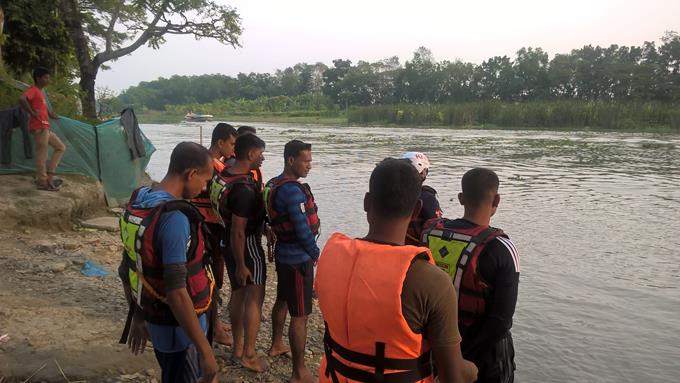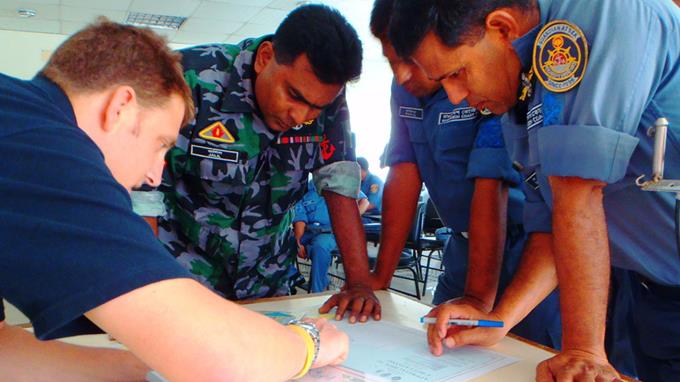Disaster related preparedness and risk reduction
Method
Disaster preparedness and risk reduction relates to the pre-emptive processes and infrastructure put in place to withstand or reduce the impact of a natural disaster. Although natural disasters such as floods, cyclones and tsunamis cannot be prevented, there are proven methods to help reduce the loss of lives and livelihood that occurs as a result of these events. These methods can come into effect pre, during or post a natural disaster. Some examples include:
- Pre-disaster: re-enforcing community infrastructure, constructing embankments and barriers around waterbodies, purchasing/making floatation devices, community planning for evacuation procedures
- During disaster: effective warning systems, availability of and access to shelter, availability of rescue services
- Post-disaster: availability of food, water and shelter, provision of emergency medical care, improved capacity for rebuilding damaged infrastructure
Approaches to disaster preparedness and risk reduction may be led by communities and community based organisations, be provided by external parties such as non-government organisations, bi- and multilateral organisations, or be implemented by central government.
For rural and low-income settings that are highly susceptible to disaster, it is important to identify disaster management approaches that are cost effective and can be implemented using local capacity and local materials. It may be necessary to prioritise interventions targeted at particularly vulnerable population groups who need assistance to remain safe during an emergency situation.
Community education programs on disaster awareness and preparedness are a cost-effective and highly accessible approach to minimising the impacts of disaster. Education programs are particularly relevant during times of the year where the frequency of natural disasters increases, such as during monsoon season. They can be led by community members and taught in schools or during community meetings. A number of resources produced by NGOs are freely available to help guide these sessions. Topics to discuss during an education sessions can include:
- Water safety: not only at the time of disaster, but also following disaster, addressing the potential dangers of flood water and overflowing or fast flowing waterbodies
- Warning signals: community members should be aware of the different methods available for receiving disaster signals (often radio, television, mobile phone alerts, announcements through a microphone) and understand how to interpret each signal and act accordingly
- Approaches to developing a disaster preparedness and response plan
Advantages
- Many risk reduction strategies can be modified to suit different contexts.
The advantages of community-led approaches to disaster preparedness and risk reduction are as follows:
- Enables communities to take ownership of their safety and well-bring.
- Allows disaster preparedness plans to be specific to the local context and natural environment as the priority issues for one community may not have the same impact on another.
- Allows the timely adjustment or modification of disaster preparedness and risk reduction plans in response to changing local priorities and needs.
- Do not require central oversight or approvals.
Disadvantages
- During and after a natural disaster, many processes may be destroyed or interrupted.
- Competing community priorities, such as illness or political instability, may divert resources away from disaster risk reduction activities.
- Some interventions can be costly, such as installing Tsunami sirens or providing rescue boats and equipment.
- A lack of communication between a number of different stakeholders involved in disaster management (such as governments and NGOs) can cause fragmented service provision and response, particularly at the time of an emergency situation.
- Resources allocated to disaster are usually focused on relief post disaster, rather than preparedness for disaster to reduce its effects.
Context
These processes are most effective to implement in areas that are frequently affected by natural disaster. Ensure that each disaster preparedness strategy is tailored to the resource availability and sociocultural norms of the local context.
Examples
Example disaster preparedness policy
Building resilient communities
Guide to disaster resilient communities (PDF 1.69MB)
More information
Disaster preparedness training (PDF 2.56MB)
General information for disaster preparedness and response
Mental health and natural disasters
Effects of Climate change in Bangladesh
Step 5
Set objectives and interventions

